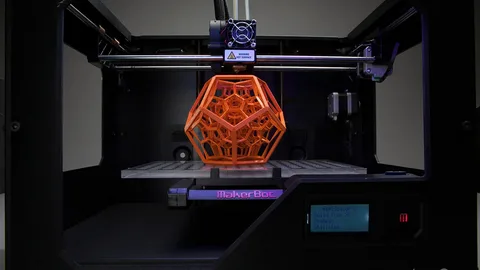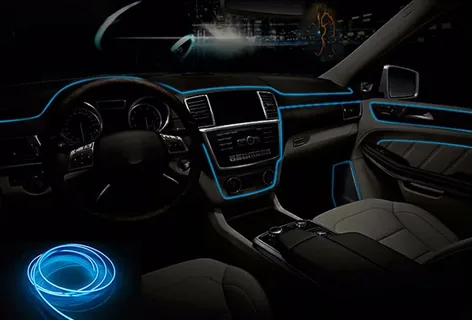In today’s fast-paced manufacturing world, speed and precision are key to staying ahead of the competition. One of the most revolutionary technologies that has helped manufacturers streamline their prototyping process is 3D printing in prototyping. Traditionally, creating a prototype involved lengthy processes like machining, molding, or casting, which could take weeks or even months to complete. However, with the advent of 3D printing, manufacturers can now produce functional prototypes in a matter of hours, significantly reducing lead times and costs.
This technology has drastically changed the way companies approach product development. With 3D printing in prototyping, manufacturers can rapidly create prototypes from digital designs, test them in real-world scenarios, and refine them quickly without the need for traditional manufacturing methods. The ability to create prototypes faster and at a lower cost accelerates the development cycle, enabling manufacturers to innovate more effectively and bring products to market quicker. This article explores the ways in which 3D printing helps manufacturers create better prototypes faster and the impact it has on the manufacturing industry.
Reducing Time to Market
One of the most significant benefits of 3D printing in prototyping is its ability to drastically reduce the time it takes to go from concept to a finished prototype. In traditional prototyping methods, manufacturers had to rely on complex machining, molding, or casting processes, each requiring specialized equipment and significant manual labor. These methods could take several weeks or even months to complete a prototype, slowing down the product development cycle and delaying time to market.
With 3D printing, manufacturers can now create prototypes in a fraction of the time. Using a 3D printer, a prototype can be built layer by layer directly from a digital design file. This eliminates the need for traditional tooling and setup, making the process much faster. Engineers and designers can produce a functional prototype in a matter of hours, test its functionality, make adjustments, and produce new iterations quickly. This speed allows manufacturers to get products into testing and market readiness faster, gaining a competitive edge over slower, traditional processes.
Cost-Effectiveness of Rapid Prototyping
Another way that 3D printing in prototyping benefits manufacturers is through its cost-effectiveness. Traditional prototyping methods require expensive molds, casting tools, or CNC machines, all of which involve high upfront costs and extensive labor. For small batch prototypes or iterative testing, these methods can become prohibitively expensive. 3D printing, on the other hand, significantly reduces costs associated with prototyping by eliminating the need for specialized tools and materials.
Manufacturers can quickly create prototypes using only the raw materials necessary for the 3D print, often at a fraction of the cost of traditional prototyping methods. Additionally, because 3D printing allows for rapid iteration, manufacturers only need to produce what is necessary for testing, avoiding the costs of overproduction or wasted materials. The cost savings make it feasible for companies to experiment with more designs, try out different materials, and make necessary changes throughout the prototyping process without breaking the budget.
Improved Design Flexibility and Customization
3D printing in prototyping also offers unparalleled design flexibility compared to traditional methods. Designers can create prototypes with highly complex geometries and intricate details that would be difficult, if not impossible, to achieve using traditional manufacturing processes. 3D printers can create prototypes with internal structures, hollow spaces, or fine details that would require additional tools or steps in conventional prototyping.
This level of flexibility enables manufacturers to test innovative designs that push the boundaries of what was previously possible. Additionally, 3D printing allows for easy customization. Manufacturers can make quick adjustments to the design and produce updated prototypes with minimal effort. If a product needs to be tailored to specific customer requirements or adjusted based on feedback, 3D printing enables manufacturers to rapidly modify the prototype and iterate without substantial rework or extra costs.
Faster Design Iteration and Testing
One of the most valuable aspects of 3D printing in prototyping is the speed with which designers and engineers can iterate on their designs. In traditional prototyping, the process of making design changes could take days or weeks, especially if molds or other specialized tools had to be remade. With 3D printing, manufacturers can quickly revise their designs, print a new prototype, and evaluate its performance in just a few hours.
This rapid iteration helps companies test multiple design ideas in a short amount of time, ensuring that they find the best possible solution before moving into full-scale production. Manufacturers can refine a prototype based on real-world testing and feedback, reducing the risk of costly mistakes later in the development cycle. The speed of design iteration allows companies to make informed decisions quickly, saving both time and money in the long run while improving the overall quality of the final product.
Collaboration and Communication Enhancement
The adoption of 3D printing in prototyping also enhances communication and collaboration within design and engineering teams. In traditional prototyping, physical models or blueprints were often difficult to share and visualize, leading to misunderstandings or delays in feedback. With 3D printing, teams can produce tangible prototypes that are easy to share, review, and discuss.
Digital 3D models can be shared across different departments or even with external stakeholders, improving transparency and collaboration. Designers, engineers, and decision-makers can evaluate prototypes together and provide real-time feedback, which helps streamline the design process. Furthermore, 3D printing makes it easier for teams to experiment with new ideas and test concepts quickly, leading to more innovative and refined final products.
Conclusion
In conclusion, 3D printing in prototyping has revolutionized the manufacturing industry by offering manufacturers the ability to create better prototypes faster, more cost-effectively, and with greater flexibility. The technology reduces lead times, enhances design iteration, and improves communication, all of which contribute to faster time to market and a more efficient product development process. As 3D printing continues to evolve, it is likely to play an even greater role in shaping the future of manufacturing, enabling businesses to stay competitive in an increasingly fast-paced market.










